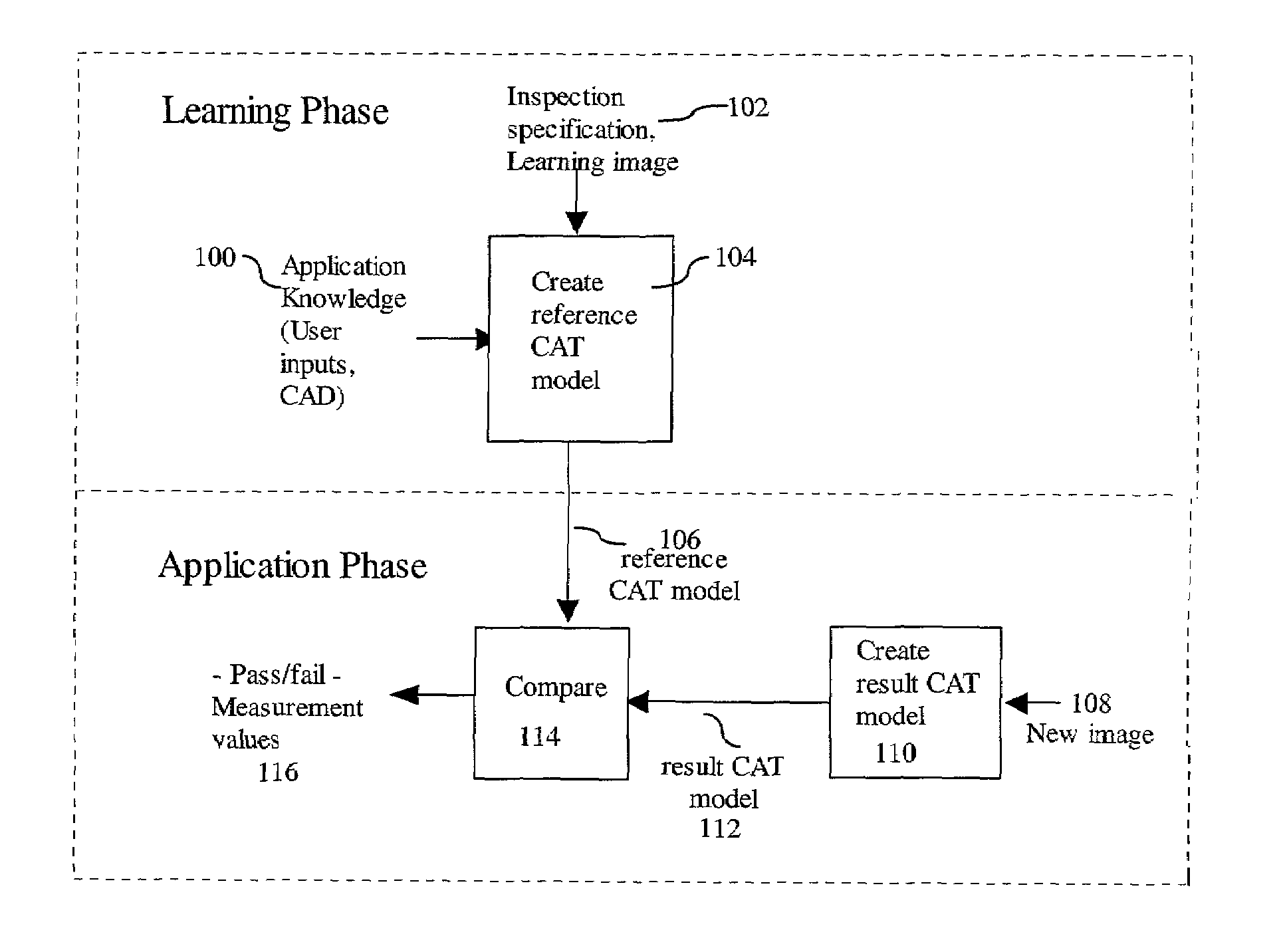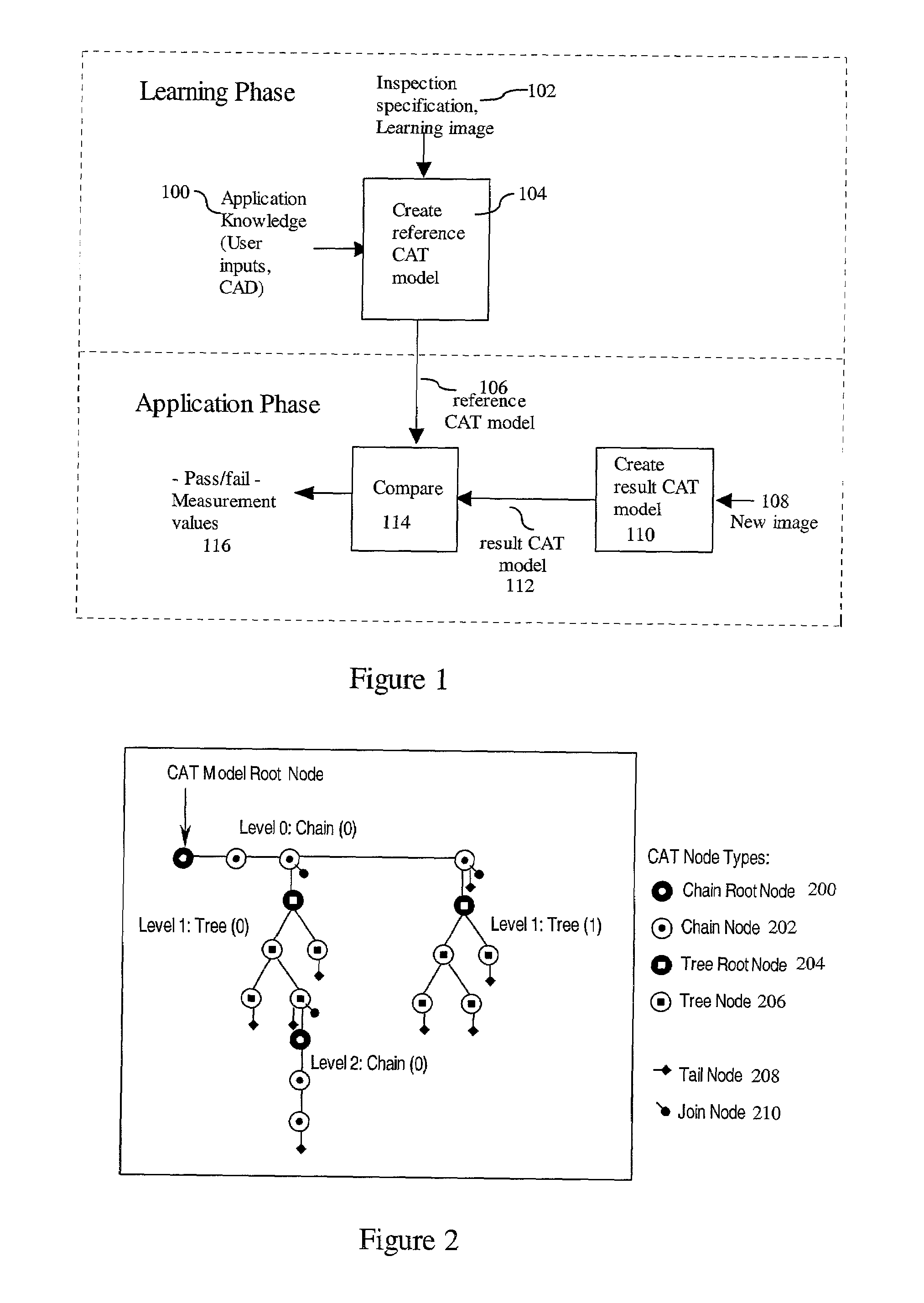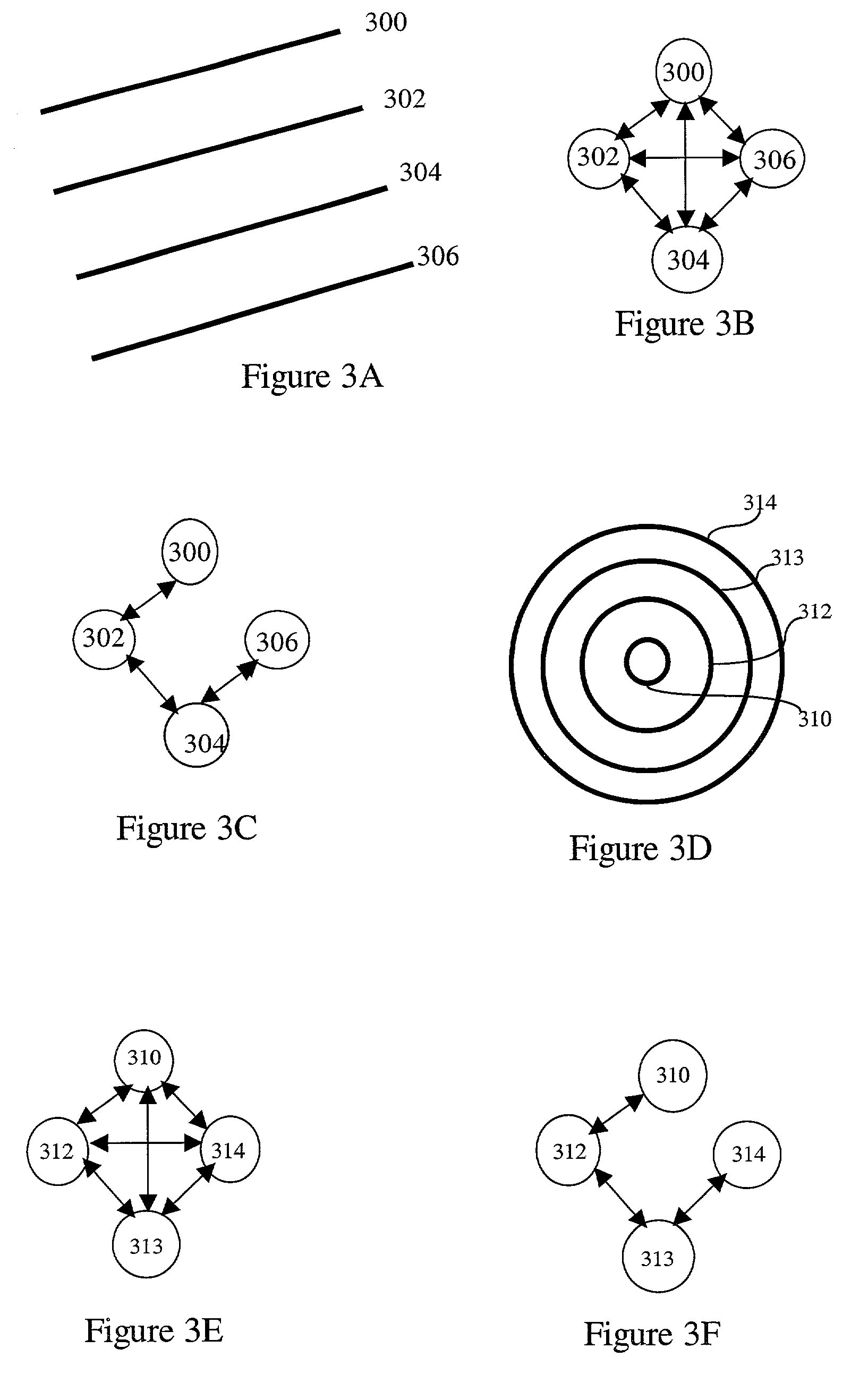Multilevel chain-and-tree model for image-based decisions
a decision system and multi-level chain-and-tree technology, applied in the field of framework for processing and extracting information in an image-based decision system, can solve the problems of inconvenient and laborious, inconsistent, expensive, manual (i.e. not automatic), and lack of physical meaning
- Summary
- Abstract
- Description
- Claims
- Application Information
AI Technical Summary
Benefits of technology
Problems solved by technology
Method used
Image
Examples
Embodiment Construction
I. Concept
[0036]This invention provides a general framework for an Image-based Decision (ID). The Chain-And-Tree (CAT) model of this invention:[0037]1. provides a framework to automatically or semi-automatically teach a specific application to an image-based decision system;[0038]2. provide a framework for discrimination between subtle changes and natural variations in an image-based decision system;[0039]3. provides a framework for separating variation effects of each component in an image-based decision system;[0040]4. provides a framework for removing defect effects of one component from other component in a common subject;[0041]5. provide a framework for linking the structure constraints of the components of a common subject and to check and resolve their consistency;[0042]6. provides a framework and standard data representation to facilitate production process control;[0043]7. provides a framework that can be easily generalized to three-dimensional or higher dimensional image d...
PUM
 Login to View More
Login to View More Abstract
Description
Claims
Application Information
 Login to View More
Login to View More - R&D
- Intellectual Property
- Life Sciences
- Materials
- Tech Scout
- Unparalleled Data Quality
- Higher Quality Content
- 60% Fewer Hallucinations
Browse by: Latest US Patents, China's latest patents, Technical Efficacy Thesaurus, Application Domain, Technology Topic, Popular Technical Reports.
© 2025 PatSnap. All rights reserved.Legal|Privacy policy|Modern Slavery Act Transparency Statement|Sitemap|About US| Contact US: help@patsnap.com



